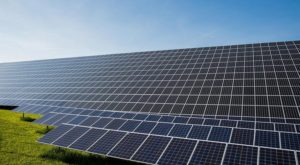Kategori : ELECTRICITY ENERGY NEWS, ENERGY AGENDA NEWS, SOLAR ENERGY NEWS, COAL NEWS - Tarih : 15 February 2019
China’s energy policies may, at first, seem paradoxical: it is shooting for the stars and it is working to have renewable energy start replacing coal-fired electricity. That’s a hard task in a country where coal is now 60% of its electricity base and renewables are 20% — and poised to be 35% in 2030.
Its goal is to clean its cities and to comply with the Paris climate agreement. In its latest five-year plan that outlines its energy goals, China has set a cap on on coal-fired generation at about 1,100 gigawatts — a hard task, given that it already has about 1,000 GW with another 250 GW under construction.
 China, meantime, is cutting the subsidies it gives to solar panel makers, which has negative implications for the domestic landscape but which has positive ramifications for foreign markets. In fact, shipments to Australia, India and Mexico have skyrocketed, says Bloomberg New Energy Finance. It adds that Vietnam, Thailand, Argentina, Cuba, Brazil, Ukraine and Kuwait are also prime destinations.
China, meantime, is cutting the subsidies it gives to solar panel makers, which has negative implications for the domestic landscape but which has positive ramifications for foreign markets. In fact, shipments to Australia, India and Mexico have skyrocketed, says Bloomberg New Energy Finance. It adds that Vietnam, Thailand, Argentina, Cuba, Brazil, Ukraine and Kuwait are also prime destinations.
“Policy shakeups in renewable energy markets, as shown recently when new solar tariffs in the U.S. caused a stir, do not have to lead to crisis,” adds Wood MacKenzie consulting firm. “What seems like a great backlash for the renewables industry in China now, could eventually become an opportunity for improvement and, most importantly, a chance for renewables to finally reach grid parity” — to become competitive with coal.
When China formed a five-year plan in 2015, its solar producers over-performed and thus created a multi-billion deficit in the program set up to encourage such manufacturing. The removal of the subsidy last June is resulting in higher local prices that will hurt domestic installations. As a result, though, Chinese producers are looking to make up ground in oversea’s markets where the increased competition results in better solar panels at cheaper prices.





